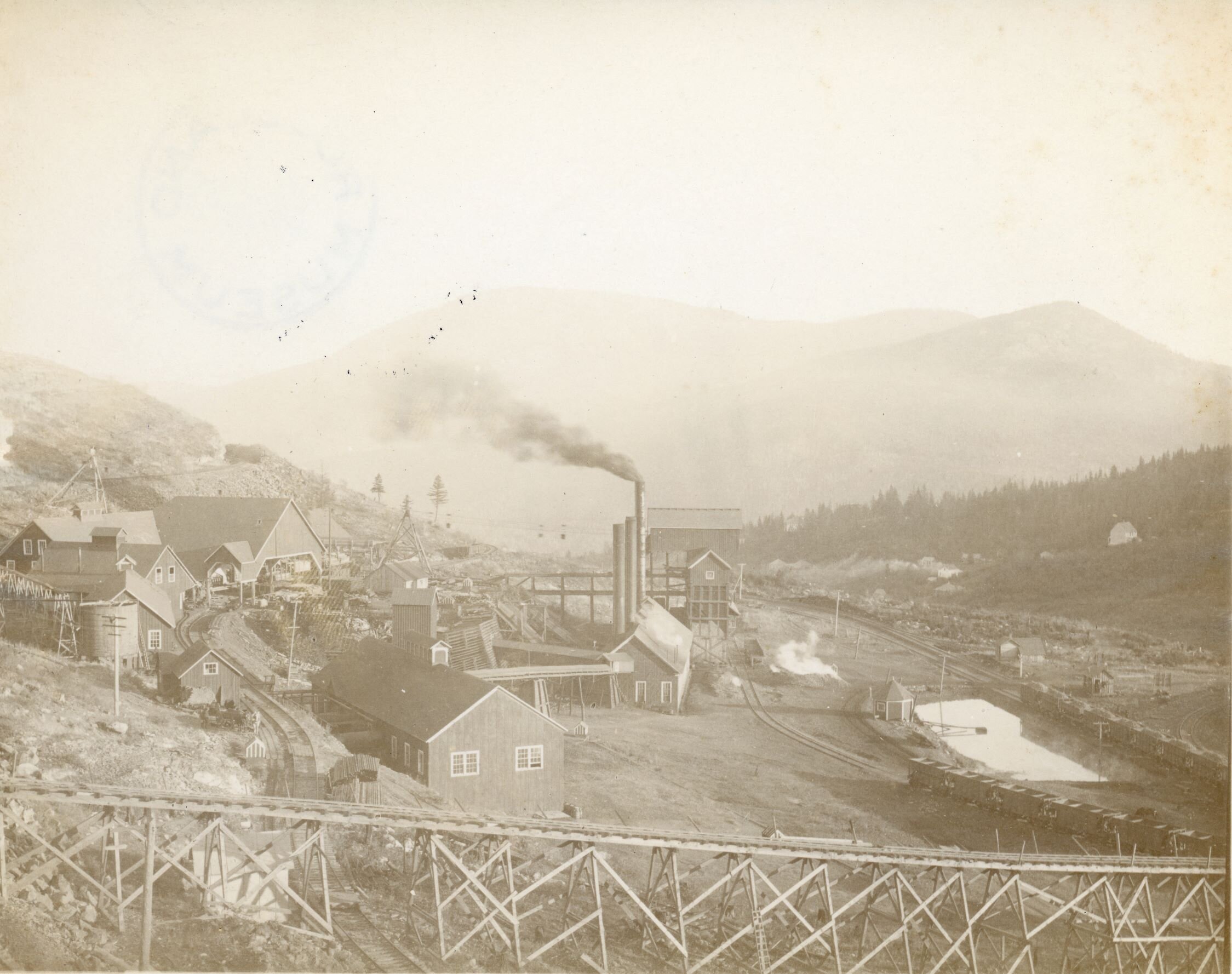
Aerial Mining Tram
Aerial mining tramways were useful systems for transporting ore from a mining site to a location where it could be taken to a smelter by rail, wagon, or boat. The tramway on the grounds of the Museum remain as a reminder of the Black Bear Mine that once operated on this site. This tramway transported ore from the Black Bear Mine, where the upper bench and buildings now are, down to the connecting railway at the current day parking lot and weigh station level.
From Ore to Powder
The Nordic miners who came to work in Rossland brought with them a love of skiing that they shared with the community of Rossland. This passion remained long after the gold left, and in 1947, the Rossland-Trail Ski Club decided to build a chairlift on Red Mountain. The chairlift would be the second in Canada, with Mount Tremblant in Quebec being the first. Construction of the chairlift began in the summer of 1947 with only one small obstacle: the volunteers constructing the lift had never even seen a chairlift in person - let alone built one from scratch! As such, engineers working at Cominco (now Teck Trail Operations) designed the lift in the style of the aerial mining trams they were familiar with; after all, the basic principles of both contraptions are the same. In fact, the 10-foot wheel and 8-foot pulley systems used for the lift were salvaged from the aerial tramway of a northern BC tungsten mine. On December 26th, 1947, the chairlift opened and was well used by skiers until its replacement in 1973.
Why so High?
Although it would appear that transporting the heavy ore on an overhead line would be much less practical than simply moving it over the ground, there are many advantages to overhead tramways that led them to be so common. Overhead tramways not only eliminated the worry of geographical challenges like ravines or steep grades, but also freed up space for other operations that needed it, such as the tracks for ore carts or the mine offices.
Photo 2349.0211: Skiers ride up the original Red chairlift.
Continue the Outdoor Tour:



